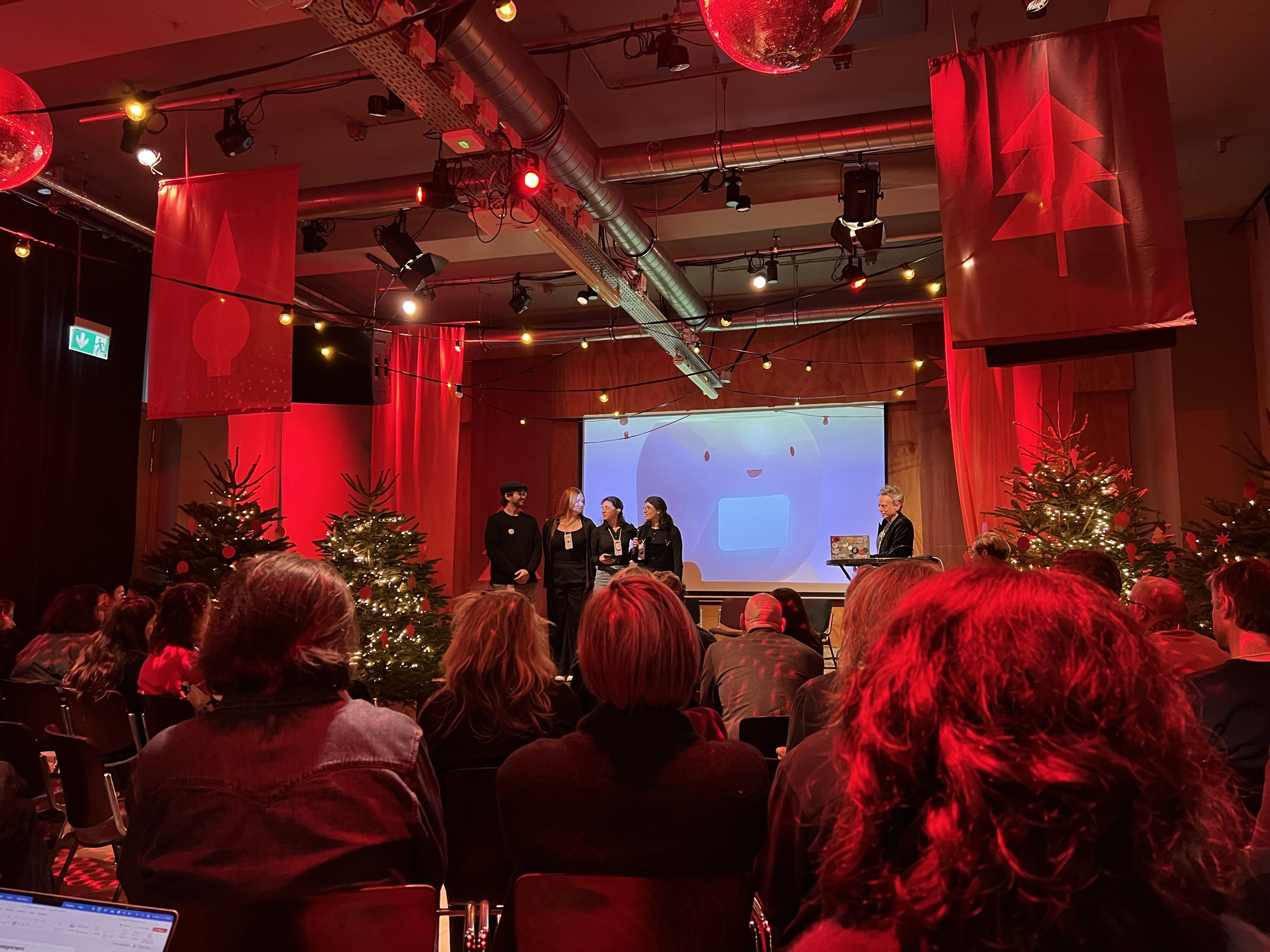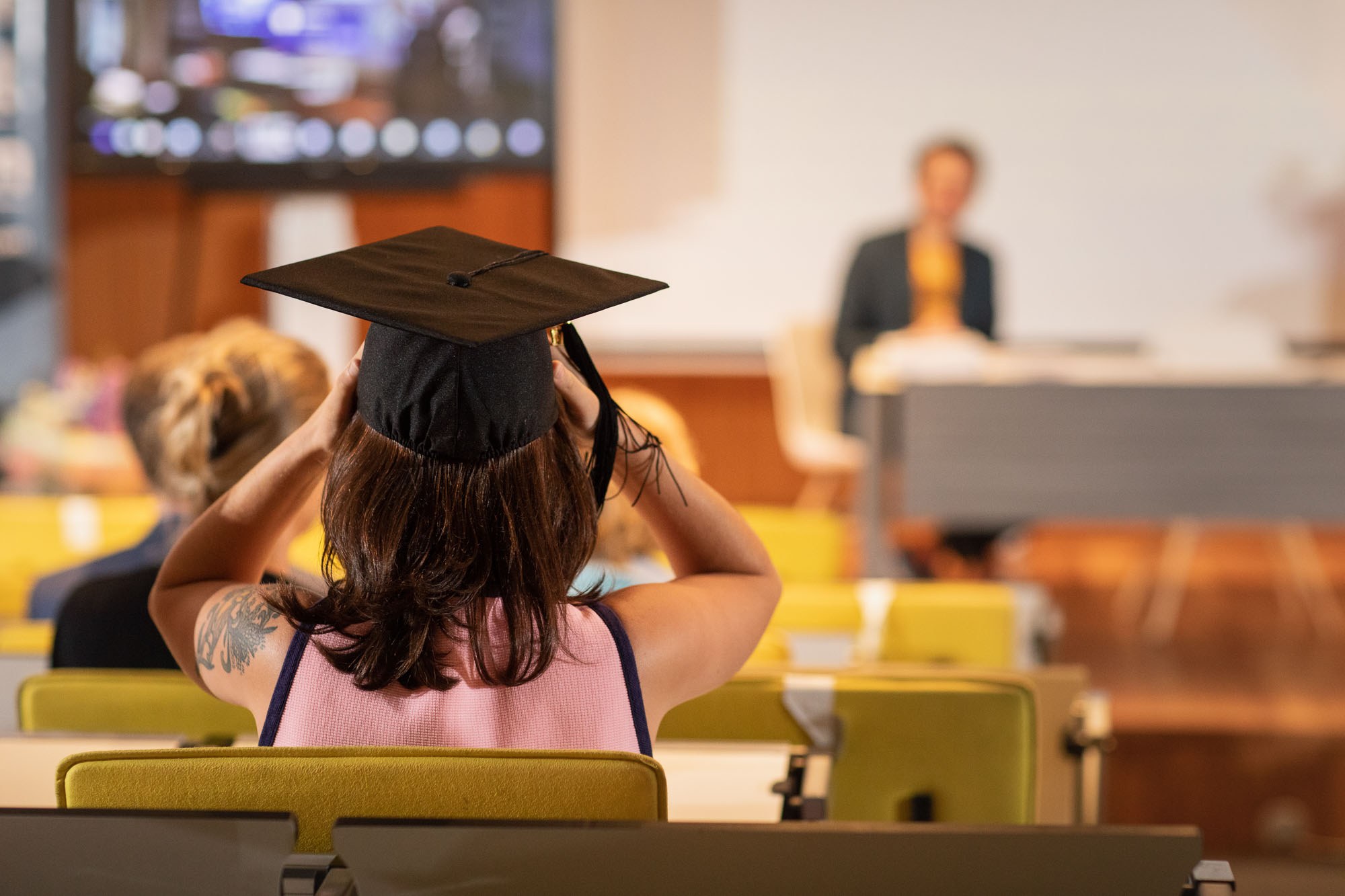Student Work at Things/Con 2023
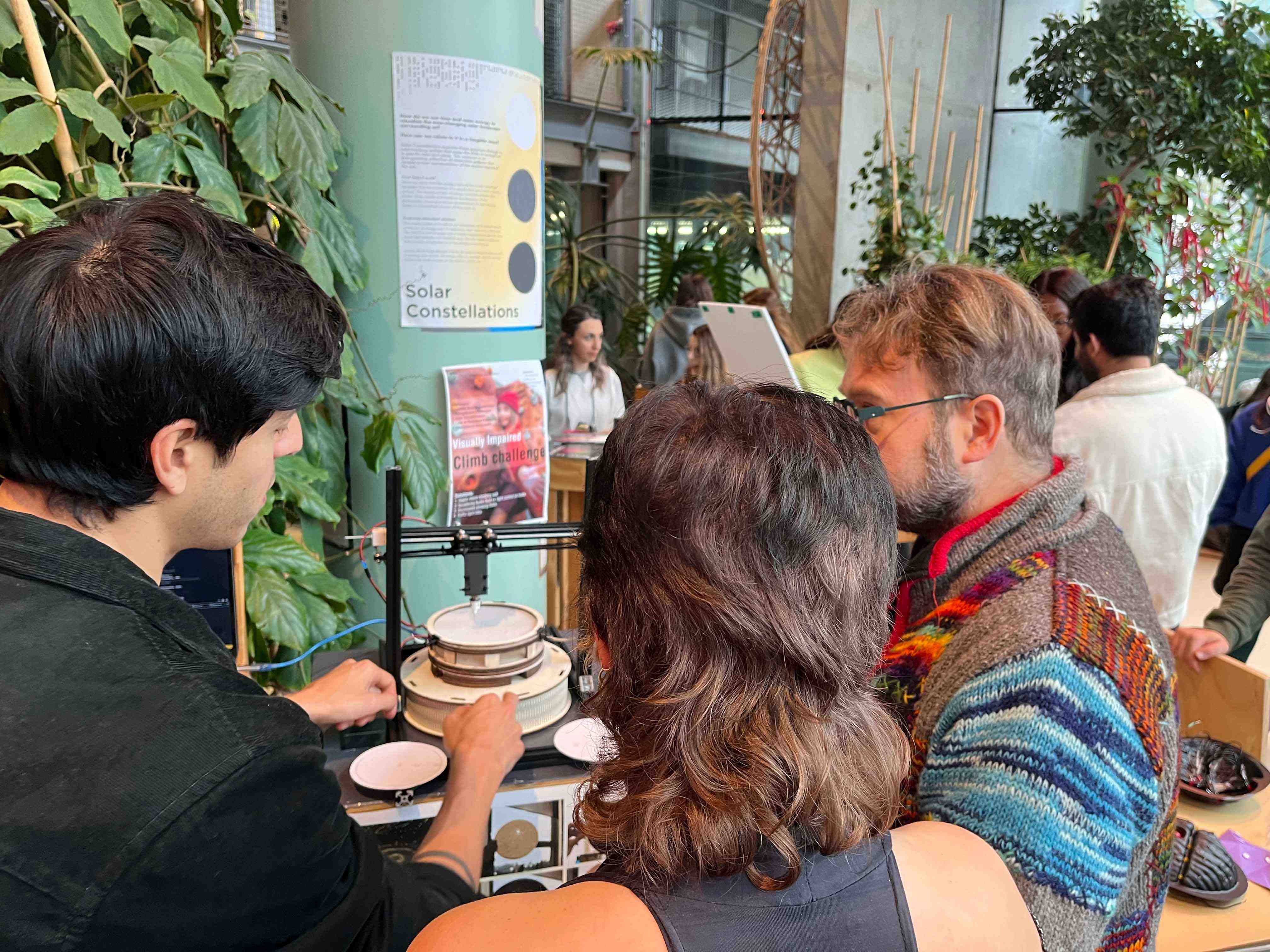
Four of our students’ projects were featured in this year’s edition of Things/Con – a conference looking at the development of IoT and other technologies from a responsible, fair, and human centric perspective.
Under the theme of Unintended Consequences, the event welcomed two projects focused on sun energy and two that looked into aiding visually and hearing impaired people in sports.
The four featured projects were part of the first out of three group projects that students must develop throughout the programme. The ones invited to be presented at Things/Con were conceived over the course of four weeks with the support and coaching of lecturers and design agencies.
SGNL
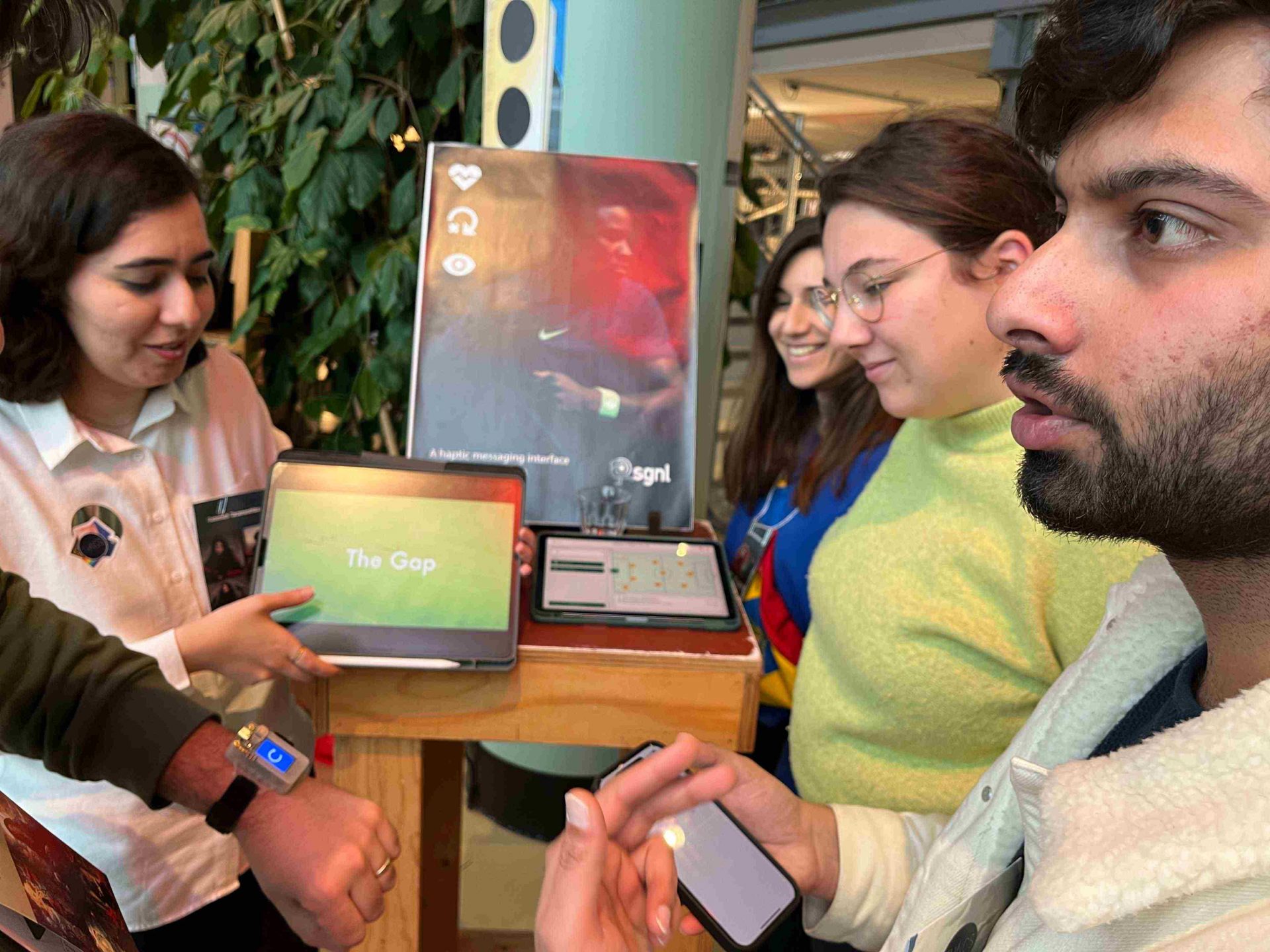
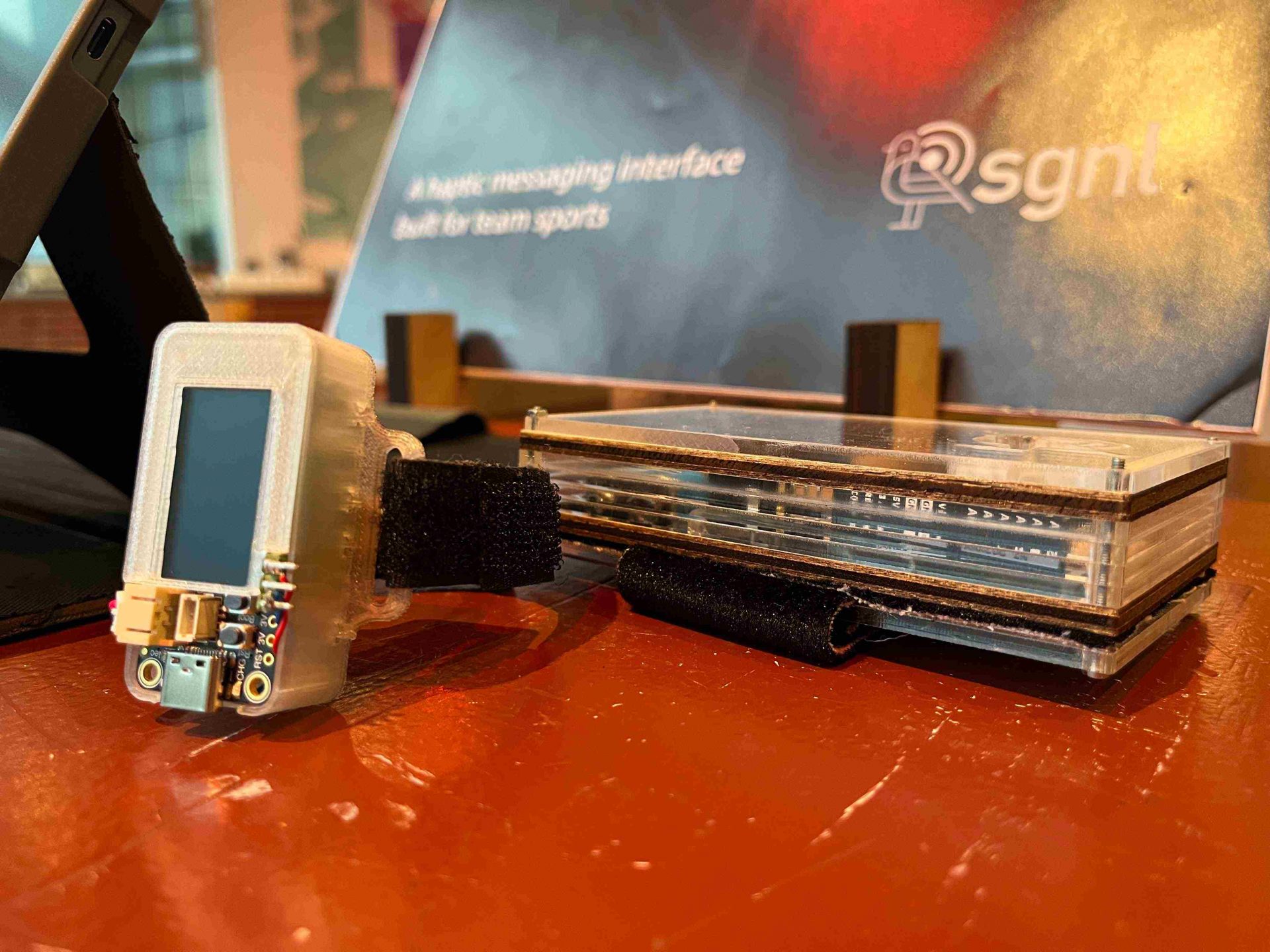
Football coaches often rely on oral communication to provide players with quick instructions during matches. But for footballers with hearing impairments, this can be a bit challenging.
Students Akhil, Emma, Fatemeh, and Gelareh came up with SGNL (reads as ‘signal’) - a kit made of a wearable wristband for the sporters and a tablet app for coaches that helps the latter reach out to players during a game. Whenever the coach wants to communicate something to a footballer with a hearing impairment, they send a notification via the app. The footballer receives vibration feedback on their wristband which tells them to either look at the coach or provides them with basic instructions.
CLIMB CHALLENGE
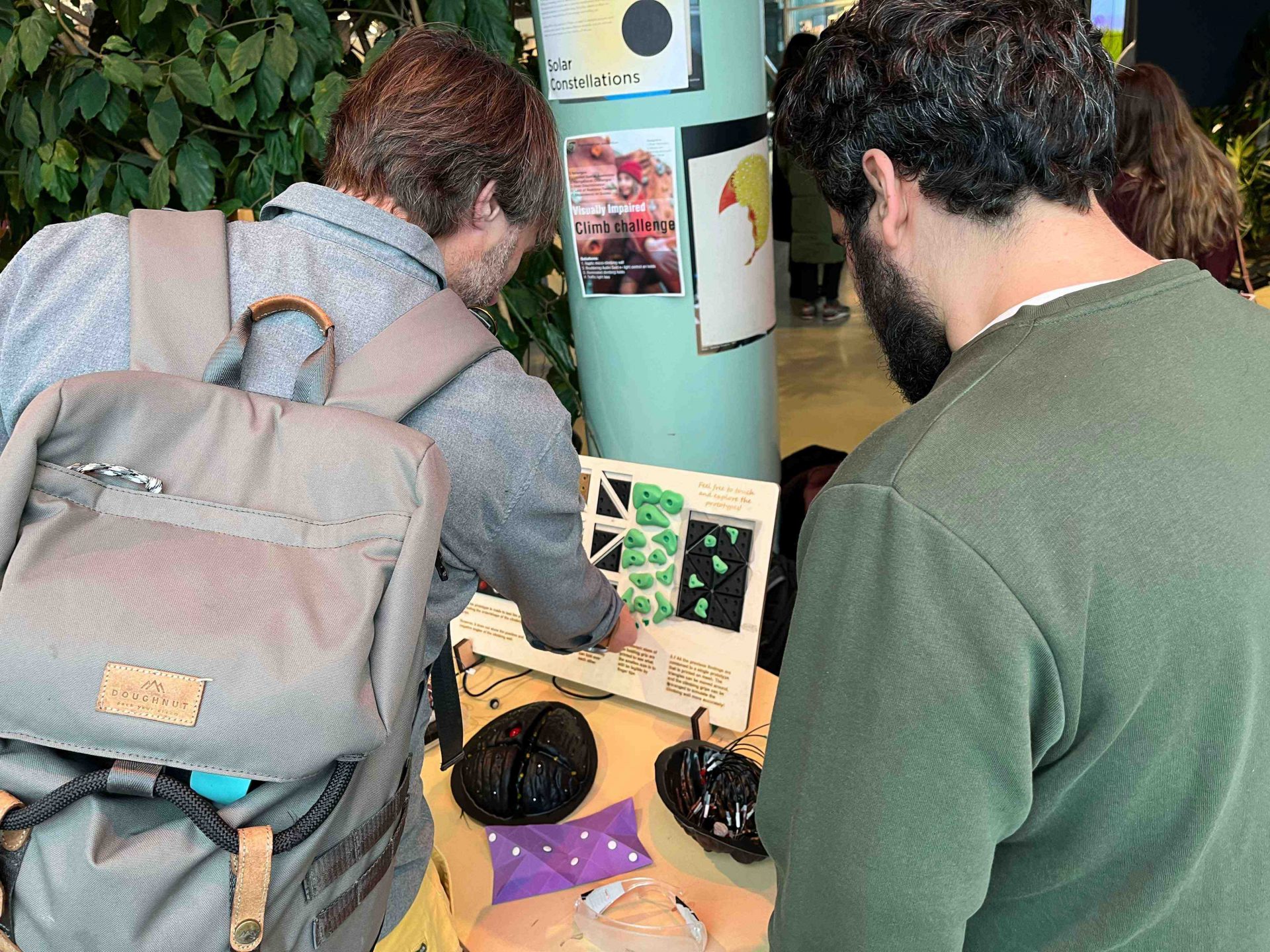
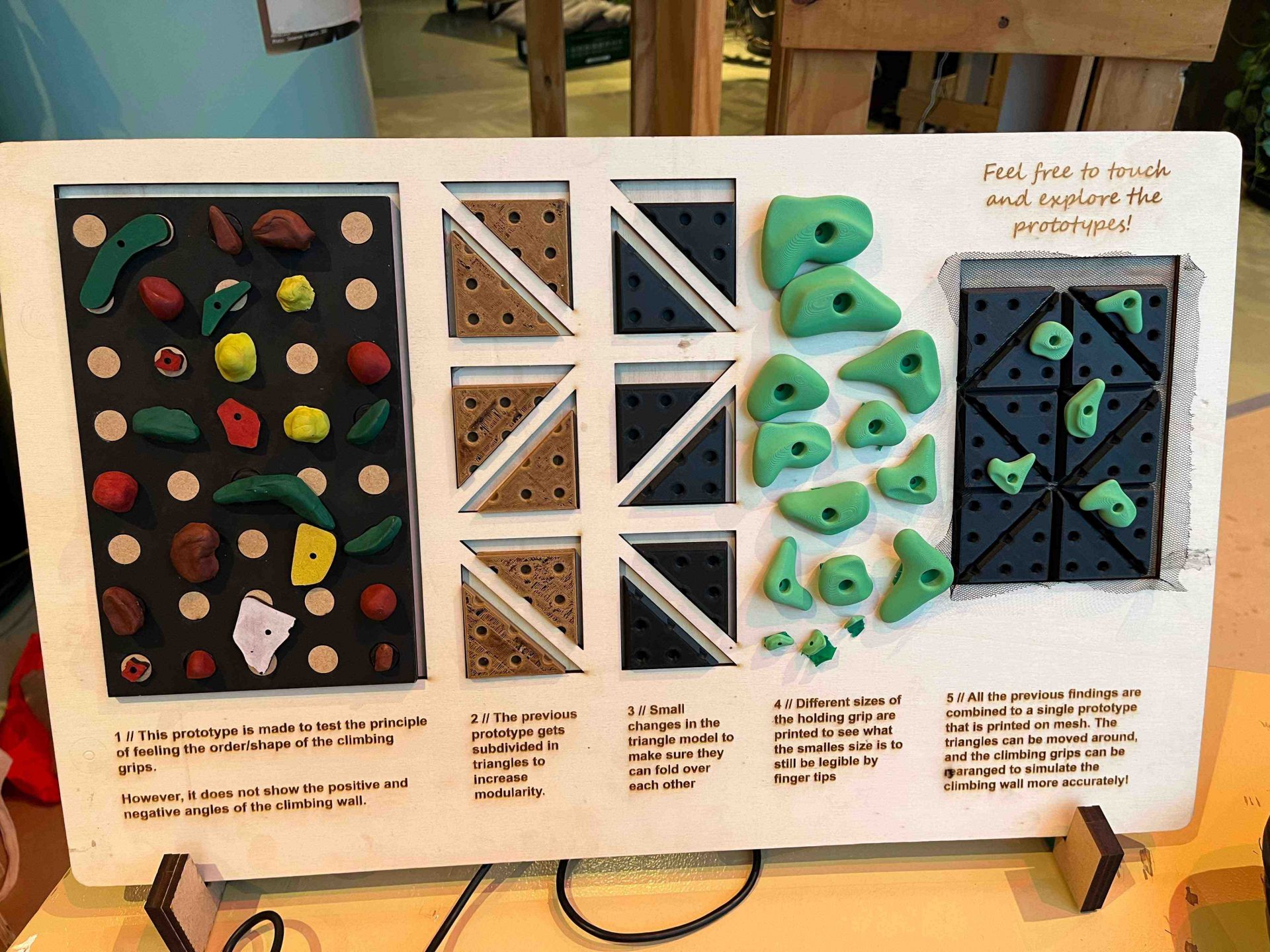
Visually impaired people wishing to practice climbing are reliant on others who can help guide them with the course. For these sporters to gain more independence, students Amirvala, Ellie, Emem, and Melissa created a group of solutions that facilitates the experience for these climbers.
Before initiating their climb, the sporters can make use of a handheld mini-board that features the actual holds on the wall. When visually impaired climbers touch this 3D board they get a better sense of the course ahead. They can also opt for an audio guide. In addition, during the climb, holds will lit up to make it clear to the climbers what their options are.
SOLARSYNC
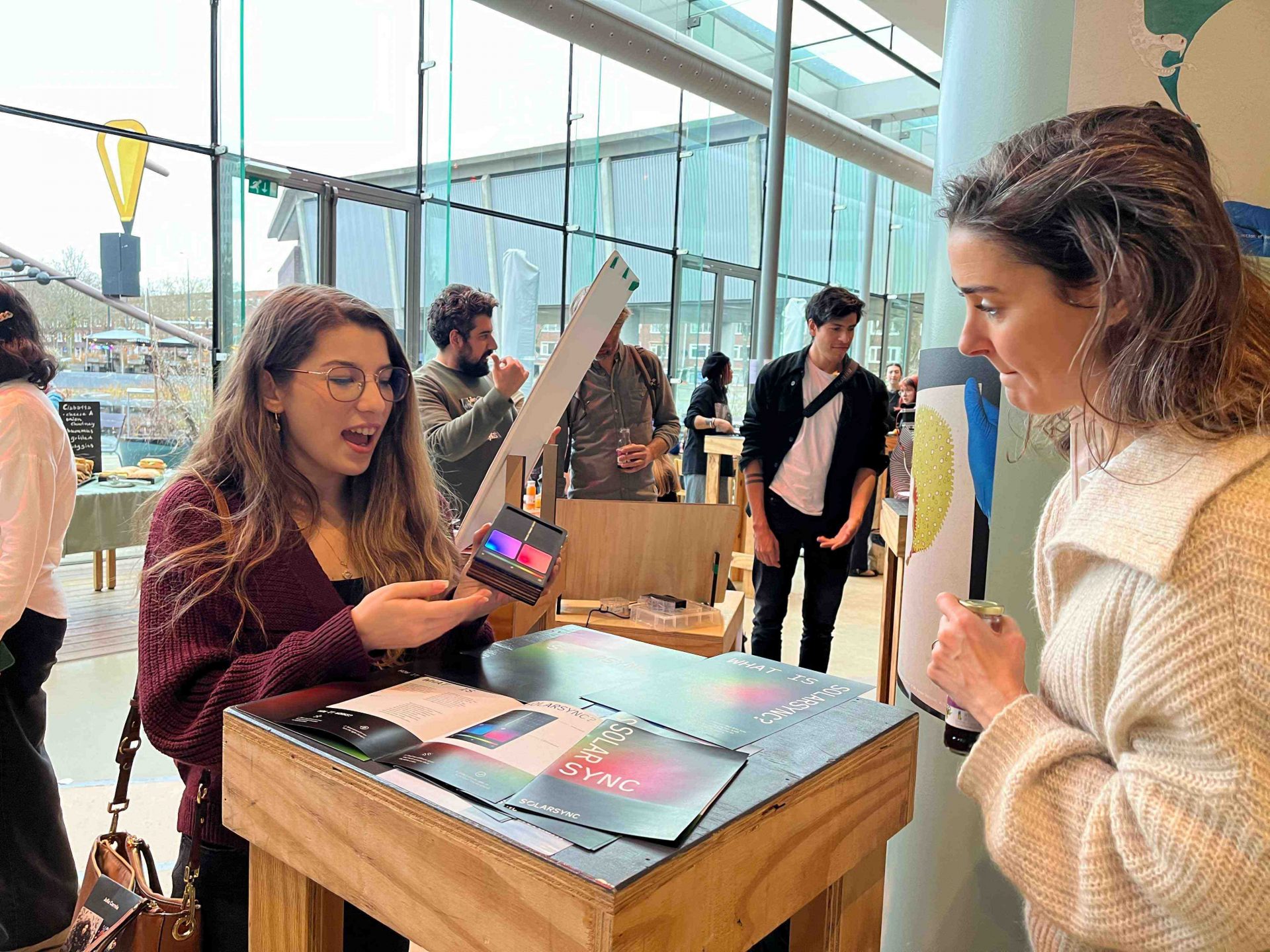
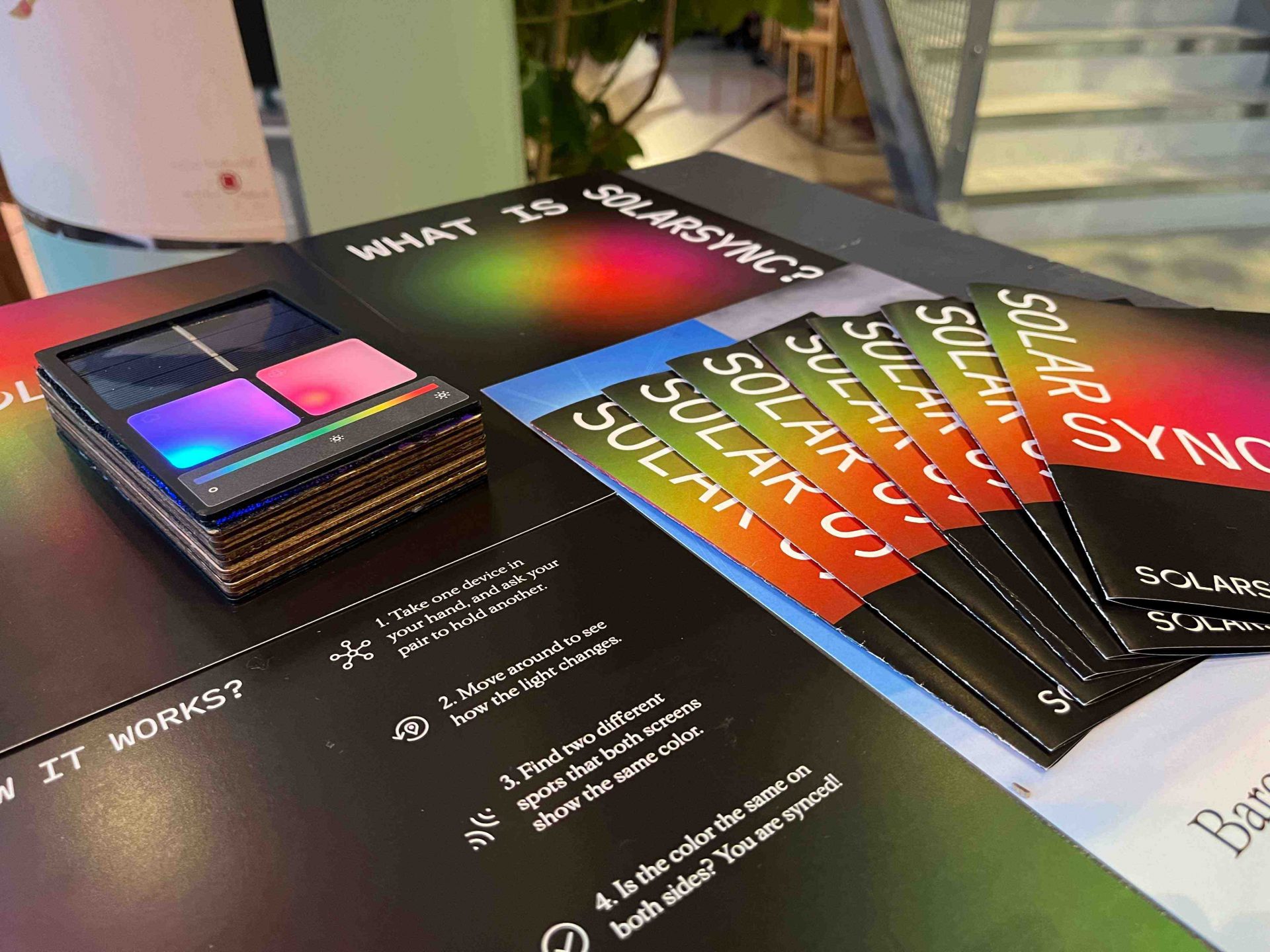
In an attempt to raise more awareness about energy derived from the sun, students Hieu, Julia, Maryam, and Nelson produced two devices that measure the star’s intensity. The idea is to place the devices in different geographic areas and allow the users to check what the solar intensity is in their location and that of where the other device is placed. By being exposed to this data, users will gain a sense of how variable sun energy actually is and that is not fully available at all times.
SOLAR CONSTELLATIONS
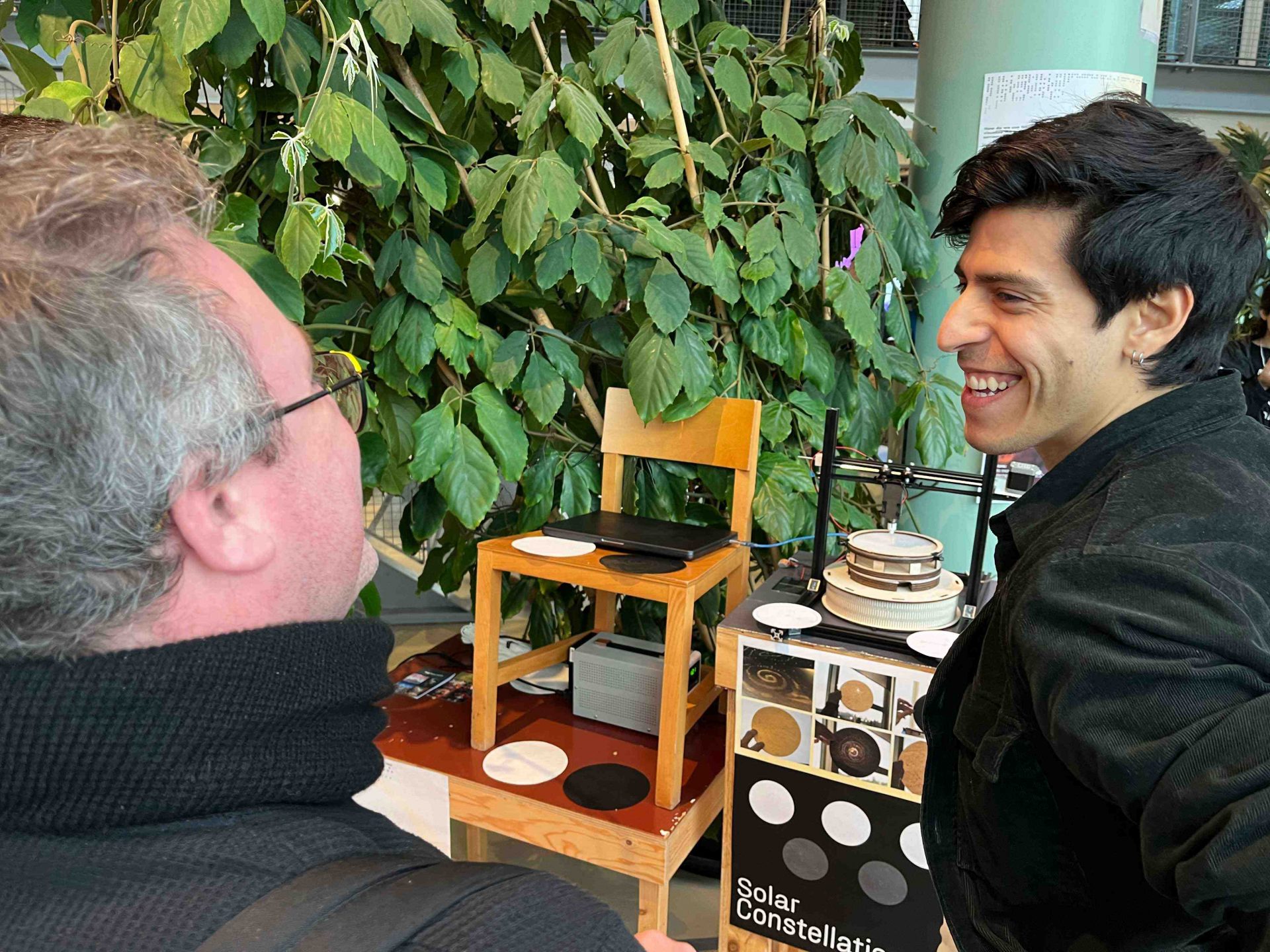
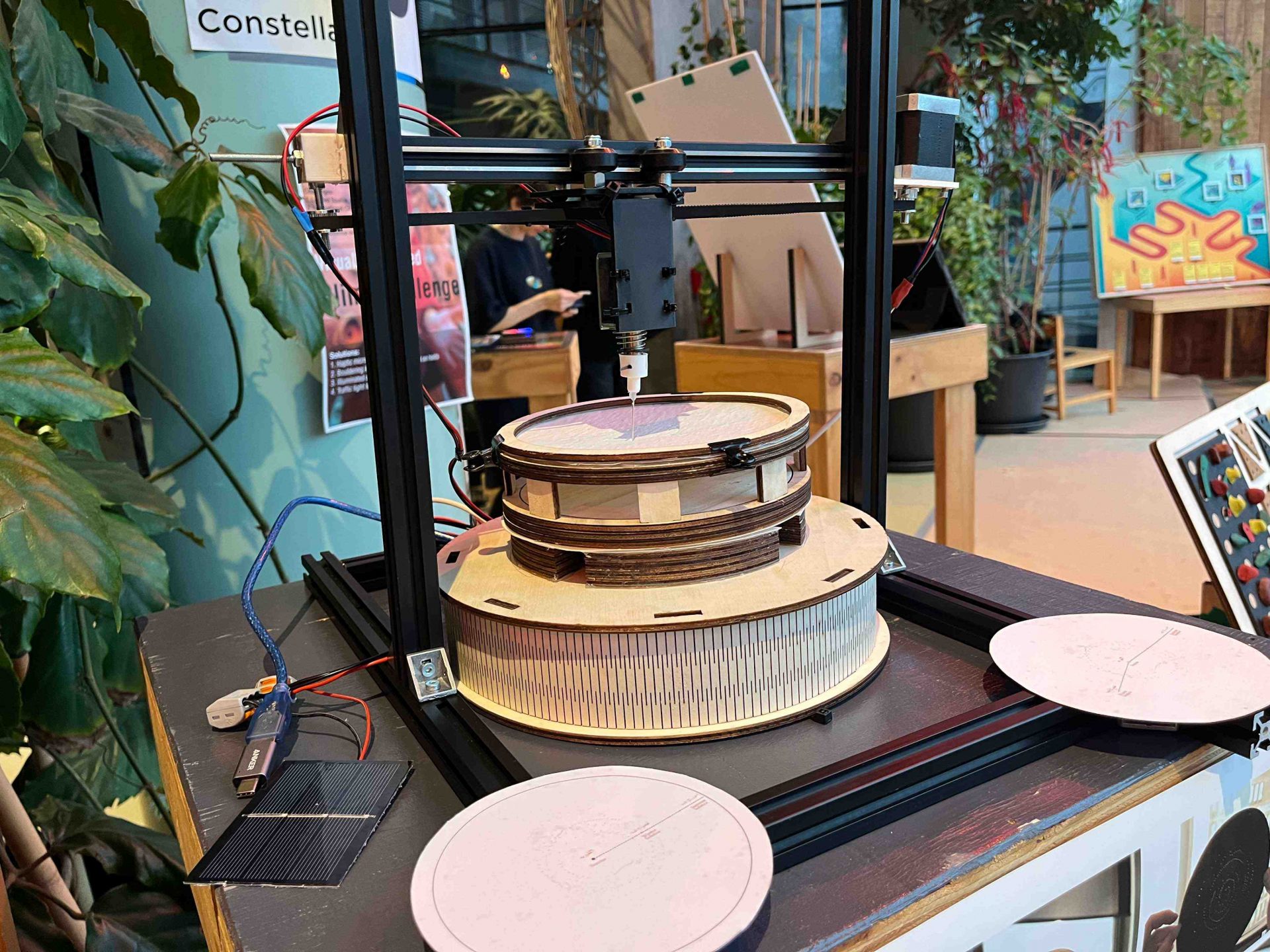
Sun energy is not always constant and the same. Solar Constellations aims to document these differences by producing visual diaries for the daily sun’s intensity. Students Chantal, Hugo, Karim, and Maria conceived a printer that reads sunlight’s intensity and translates that data into a punched pattern on paper discs. The punchy patterns let us see not only how intense sunlight was on that day (the more bundled the punches the higher the intensity) but also for how long that day enjoyed sunlight (the shorter the day the smaller the pattern is).
